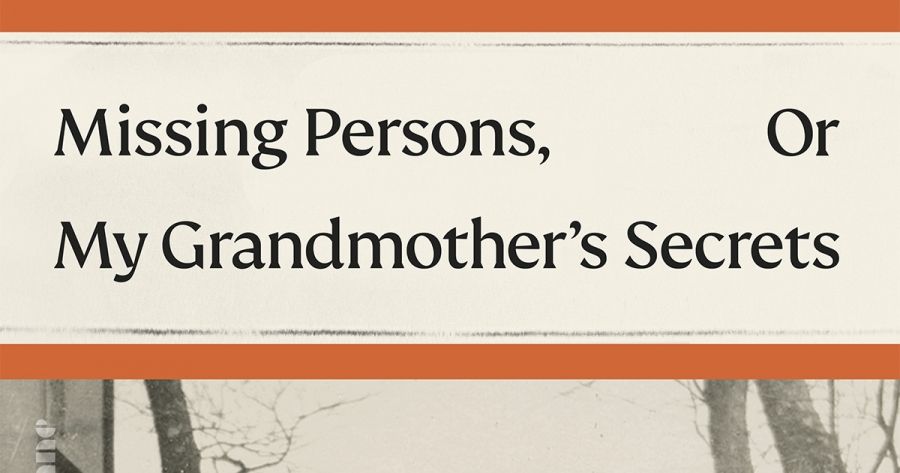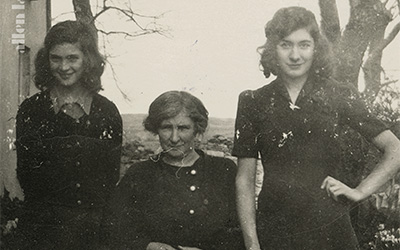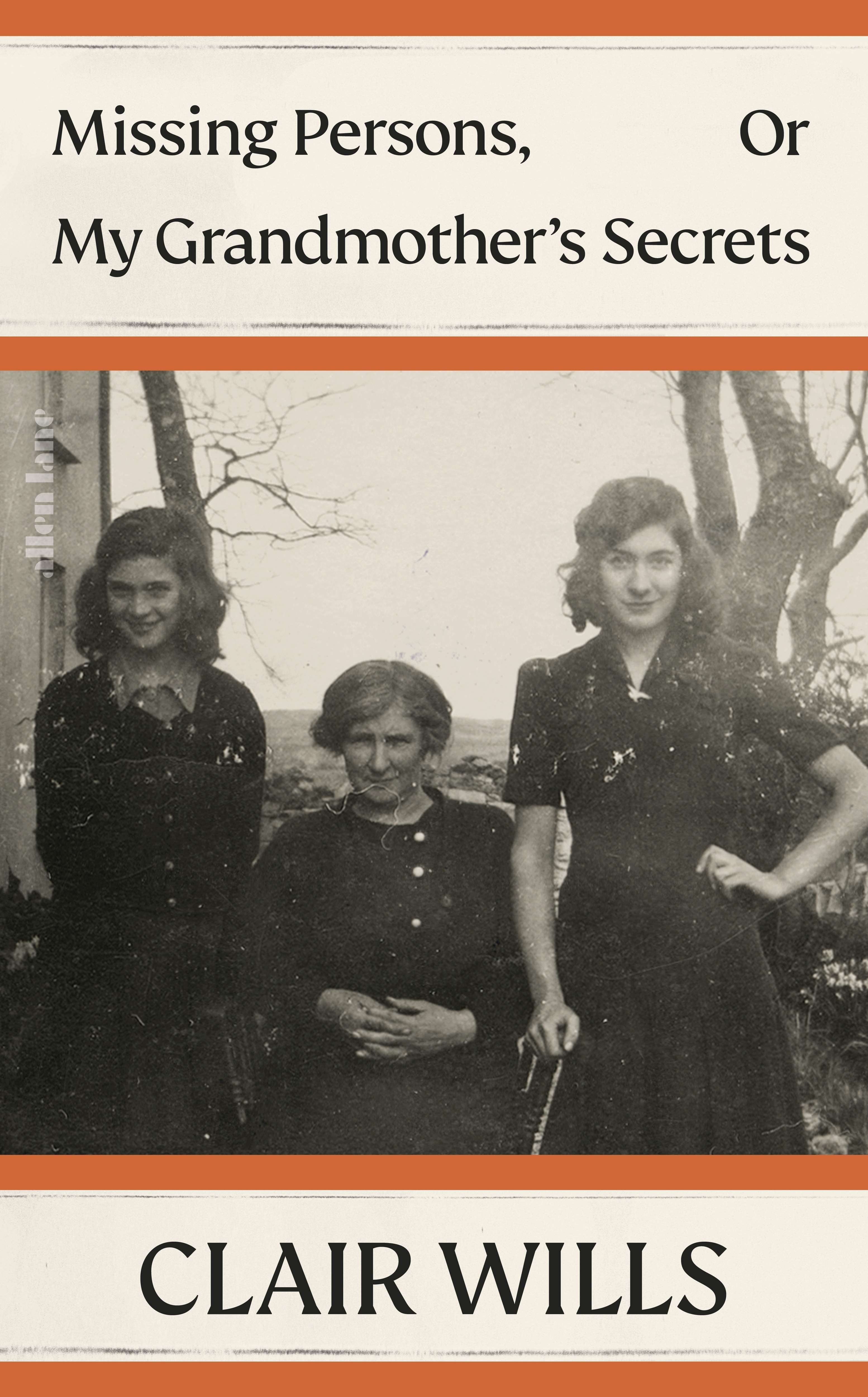
- Free Article: No
- Contents Category: History
- Review Article: Yes
- Article Title: Silence and stigma
- Online Only: No
- Custom Highlight Text:
When amateur historian Catherine Corless wrote in the Journal of the Old Tuam Society (2012) that the bodies of 796 children who had died in Tuam’s Mother and Baby Home between 1925 and 1961 might have been interred in a disused septic tank within the home’s grounds, she supposed her involvement in the search for truth would be at an end. The article, she expected, would prompt academics, politicians, and law enforcement agencies – not to mention the Bon Secours nuns who ran the home – to begin their own inquiries.
- Featured Image (400px * 250px):

- Alt Tag (Featured Image): Diane Stubbings reviews ‘Missing Persons, Or My Grandmother’s Secrets’ by Clair Wills
- Book 1 Title: Missing Persons, Or My Grandmother’s Secrets
- Book 1 Biblio: Allen Lane, $45 hb, 208 pp
- Book 1 Cover Small (400 x 600):

- Book 1 Cover (800 x 1200):

What followed was silence. Another three years would pass – Corless working with survivors of the home to keep the story alive – before the Irish government set up a commission to scrutinise mother-and-baby homes throughout Ireland. In 2020, the commission’s final report was released. As cultural historian Clair Wills reported in a 2021 article in the London Review of Books, despite evidence of ‘extraordinarily high mortality rates … cruelty at the hands of the nuns, forced labour, illegal birth registrations and pressure to consent to adoption … the authorities that ran the homes [were] on the whole given a pass’. Nevertheless, Wills argues: ‘the underlying truth of this history … is that the Irish church and state, with the passive acceptance and sometimes active collusion of Irish families, was willing to sacrifice its own children – of whatever age – for what it considered to be survival’.
Missing Persons, Or My Grandmother’s Secrets has its seeds in both Wills’s analysis of the commission’s report and family rumours of a cousin born in one of these homes. The memoir is impelled by three deceptively simple questions: ‘Who was missing [from her own family]? Why were they missing? Why was their absence condoned?’ Her research reveals her own family’s complicity in this shameful skein of Irish history, a complicity concealed within an aggregation of silence and stigma spanning several generations.
Central to Wills’s story is her maternal grandmother, Molly. In the mid-1950s, Molly compelled her young neighbour Lily – pregnant to Molly’s son, Jackie (Wills’s uncle) – to see out her confinement in the mother-and-baby home at Bessborough, Cork, which is as notorious now as the home at Tuam. One in four children born at Bessborough died there, one ‘common cause of death … [being] “marasmus”, or malnutrition’.
After giving birth to a daughter, Mary, Lily was forced to work for years in the home, paying off her debt to God and the nuns. Years later, after spending most of her life institutionalised, Mary would kill herself and her own unborn baby. ‘It must have been intolerable,’ Wills writes, ‘for Mary to think of that cycle [of shame] beginning again.’
Public revelations of, first, the appalling conditions under which young women were forced to work within the Magdalene Laundries (run by various orders of nuns) and, soon after, the horrors of the mother-and-baby homes, fused the shame of Wills’s family with the shame of the nation. Wills discerned that the silences and secrets that had festered in her own family – the reluctance to even acknowledge Lily’s and Mary’s existence – were reflected in the silences and secrets mouldering within Ireland itself. The fate of women like Lily and children like Mary was the result of ‘local, familial and intimate habits of secrecy and concealment [meeting] the modern institutions designed by the … Irish state to manage and contain them’. Wills’s forebears were emblematic of a ‘whole society [that] learnt not to look, or not to look too closely, and certainly not to ask too many questions. A whole society [that] learnt to avoid the shady outlines of the missing people who had once sat at their tables.’
Wills’s perceptive efforts to untangle the knot of fear, disgrace, and indifference that facilitated the literal and figurative entombment of ‘illegitimate’ children, not to mention the oppressive penalties imposed upon mothers as they paid – physically and emotionally – for their sins, allow her to contextualise Molly’s behaviour without necessarily condoning it. Nonetheless, Wills struggles to comprehend that Molly’s actions were those of a woman who had herself conceived out of wedlock and who had, thereby, borne her own burden of guilt and apprehension. How, given her own history, could Molly refuse refuge to the mother of her son’s child? How could she facilitate the exile of her son to England, so that he need bear none of Lily’s shame? (As Taoiseach Enda Kenny noted in his response to the commission’s report, ‘it seemed as if in Ireland our women had the amazing capacity to self-impregnate’, such was the eagerness of church and state to absolve men of any responsibility.)
The closest Wills comes to an answer is that perhaps Molly was somehow preoccupied with her own survival, with keeping her grasp upon a hard-won respectability by denying her latent ‘sexual shame’: ‘She needed to think of Lily as a schemer … out to marry her son and move her [Molly] out of the way … because otherwise the similarities between them would be all too clear.’ More pragmatically, Wills acknowledges that when ‘my uncle, my grandmother, and Lily’s relatives handed Lily and her child over to the institutions they were doing what most people did’. Thus, they were able to absolve themselves of all blame, the muck of illegitimacy ‘[tidied] away … behind closed doors’.
Intricately structured and unsparingly honest, Missing Persons reminds us that, if we are to comprehend the degree to which the past impresses itself within ‘the lives of those who [are] permitted to continue’, we must be fully cognisant of the omissions within our histories; of those individuals who, as Wills writes, are missing from our tables.
How egregious, then, that the evidence of those who testified before the mother-and-baby commission has been sealed for thirty years and that, more than ten years after their discovery, the perfunctorily interred remains of the babies and infants of Tuam are still waiting to be exhumed.


Comments powered by CComment